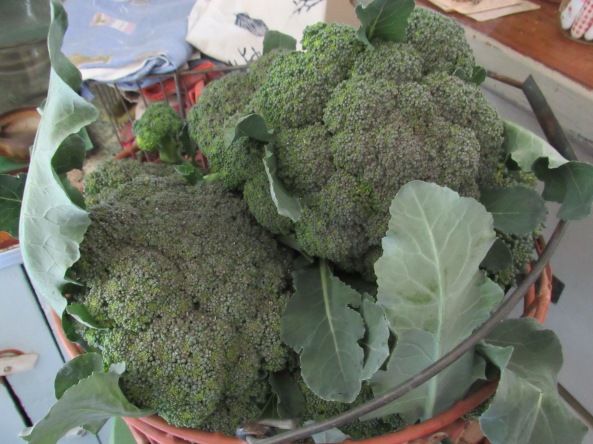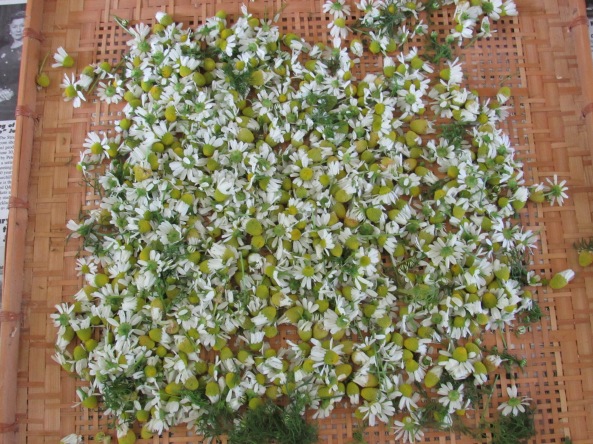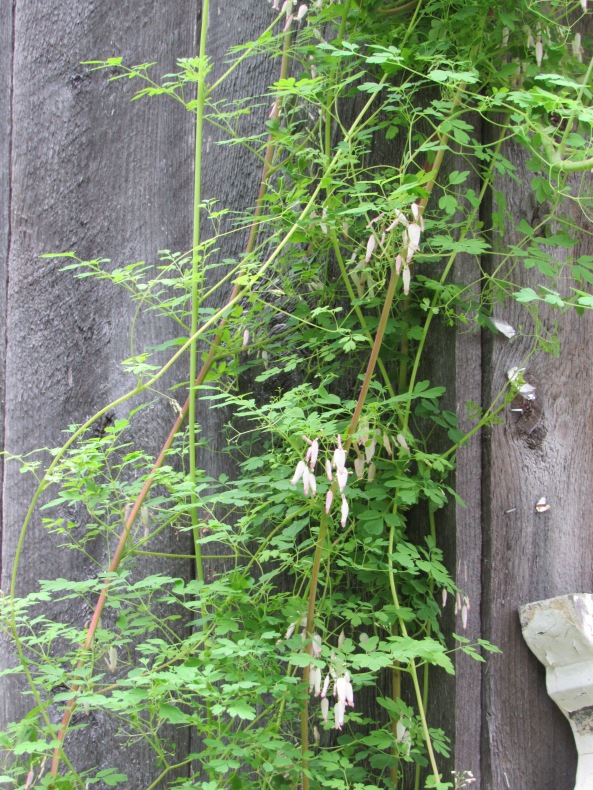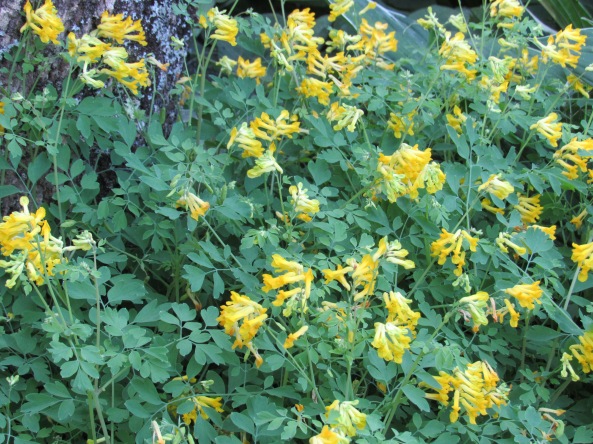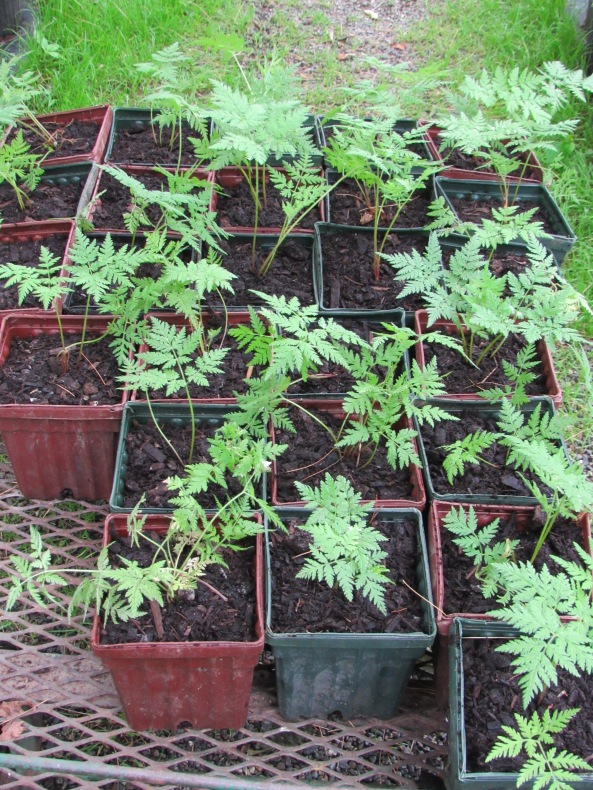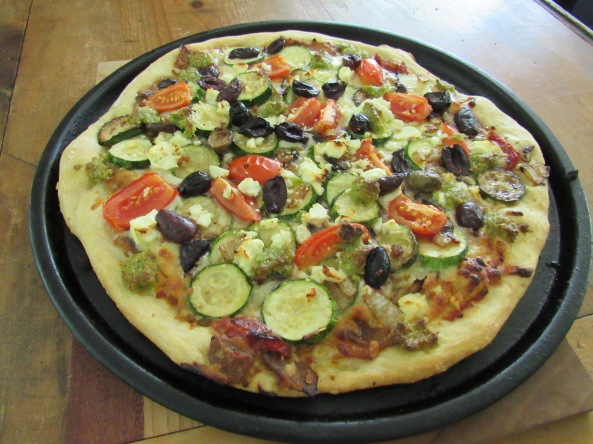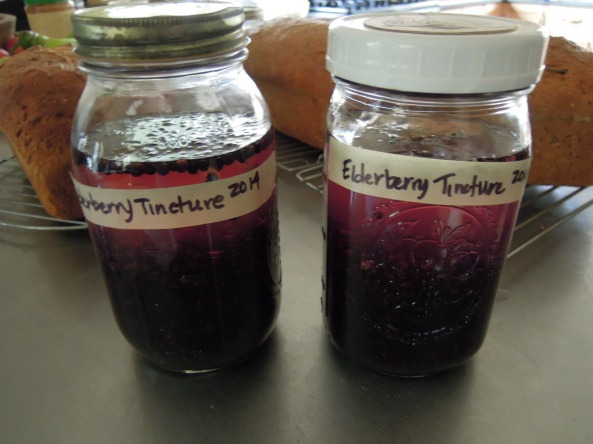 Black chokeberry is a North American native shrub that is very useful to both wildlife and as a healthy food for humans. The berries are a favorite of grouse, turkeys and other birds. Though quite tart, when sweetened the fruit is very tasty and good for you, being a strong antioxidant. Many medicinal benefits are claimed and practiced from using the extracts. They have extremely high antioxidative activity, are used as an anti- inflammatory, and are super high in vitamins ( A, C, D, B9, B2 and vitamin E) and beta-carotene. Growing from 3 to 10 feet tall, depending on the cultivar, chokeberry is an easy keeper being not fussy about moist or dry soils, PH, and light conditions from full sun to part shade. It can develop into small colonies that are simple to manage with minimal pruning and thinning if so desired. Along with the fruit is an amazing display of orange and red foliage in the fall. Several forms are available to suit the size of your garden or landscape.
Black chokeberry is a North American native shrub that is very useful to both wildlife and as a healthy food for humans. The berries are a favorite of grouse, turkeys and other birds. Though quite tart, when sweetened the fruit is very tasty and good for you, being a strong antioxidant. Many medicinal benefits are claimed and practiced from using the extracts. They have extremely high antioxidative activity, are used as an anti- inflammatory, and are super high in vitamins ( A, C, D, B9, B2 and vitamin E) and beta-carotene. Growing from 3 to 10 feet tall, depending on the cultivar, chokeberry is an easy keeper being not fussy about moist or dry soils, PH, and light conditions from full sun to part shade. It can develop into small colonies that are simple to manage with minimal pruning and thinning if so desired. Along with the fruit is an amazing display of orange and red foliage in the fall. Several forms are available to suit the size of your garden or landscape.
We tincture the berries and keep them on the pantry shelf for use through the winter.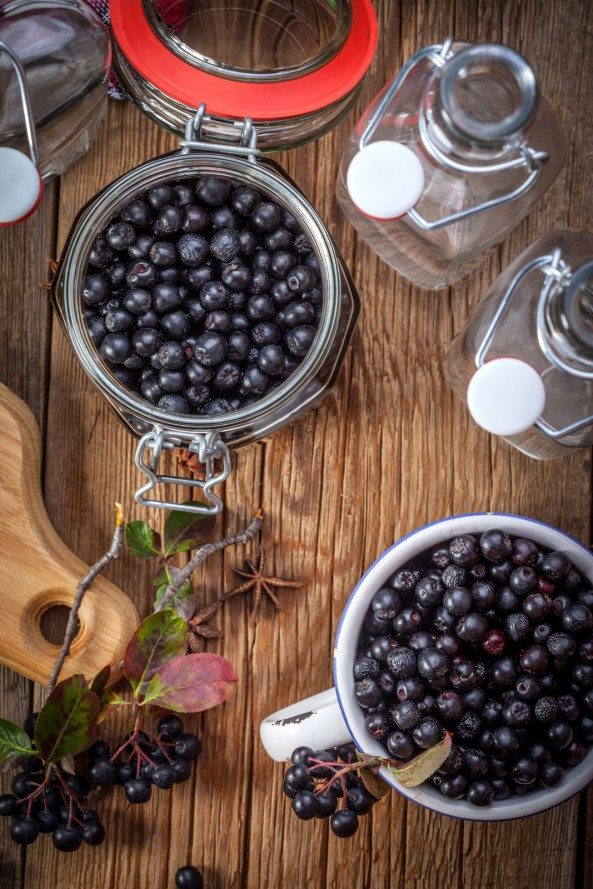
Here is a more thorough list of their incredible health benefits:
Alleged Health Benefits:
Cancer (brain, lung, colon, liver)
Cardiovascular ailments: lowers blood pressure, lowers bad and improves good cholesterol, promotes heart and arterial health, improves elasticity of blood vessels and prevents their clogging, reduces discomfort due to varicose veins and inflammation (flavonoids, proanthocyanidin, biophenols, vitamin P)
Accelerates recovery from heart/brain stroke (anthocyanins, phenols, vitamin P).
Stops arteriosclerosis, prevents dementia and Alzheimer’s, helps with headaches and migraines through improved circulation (anthocyanin, vitamin P)
Eyes: cures macular degeneration, prevents cataract, protects from UV radiation, improves vision (anthocyanin, vitamin P, beta-Carotene).
Diabetes: regulates hemoglobin and blood sugar level, regulates pancreas, and cures diabetes (sorbitol, anthocyanin)
Liver and gallbladder: improves the function of both organs, regenerates liver even in major diseases and cleanses it from fatty deposits; gallstones, inflammation, jaundice (phenols, flavonoids)
Regulates thyroid and other hormones.
Gastrointestinal: reduces inflammation, pain, cramping, stomach ulcers (anthocyanins) and stops diarrhea.
Urinary tract infections(5-10 times more effective than cranberry),some prostate problems
Increases immune function, so helps with colds and influenza (flu) (biophenols and vitamin C)
Cleansing: Aronia binds heavy metals and radioactive materials and helps their excretions (beneficial in post-radiation therapy or accidental exposure to radiation).
Disinfects wounds and dramatically accelerates healing time (helpful post-operatively) (biophenols, vitamins P, C and E).
Skin: Improves elasticity, reduced wrinkles, stretch marks, sun spots, and broken capillaries; freshens skin and slows down the aging process (vitamin E, beta-Carotene, flavonoids)
Aging: slows down aging (antioxidative function)






